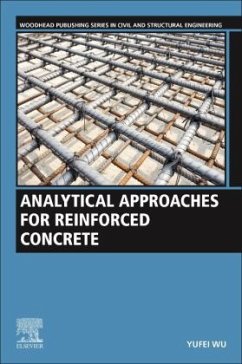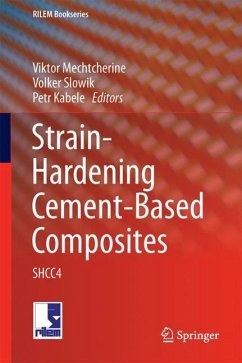
Strain softening and instability of sand
Experimental study under plane-strain conditions
Versandkostenfrei!
Versandfertig in 6-10 Tagen
52,99 €
inkl. MwSt.

PAYBACK Punkte
26 °P sammeln!
The majority of experimental studies on strainsoftening and instability behaviour of sand have beencarried out under axisymmetric conditions. However,most geotechnical structures such as slopes,embankments, and retaining walls, are notaxisymmetric problems and can only be simplified intoplane-strain conditions.A comprehensive experimental study on the strainsoftening and instability behaviour of a granularsoil under plane-strain conditions is presented inthis book. A new plane-strain apparatus was developedand used. The main features of the new plane-strainapparatus include appropriately enlar...
The majority of experimental studies on strain
softening and instability behaviour of sand have been
carried out under axisymmetric conditions. However,
most geotechnical structures such as slopes,
embankments, and retaining walls, are not
axisymmetric problems and can only be simplified into
plane-strain conditions.
A comprehensive experimental study on the strain
softening and instability behaviour of a granular
soil under plane-strain conditions is presented in
this book. A new plane-strain apparatus was developed
and used. The main features of the new plane-strain
apparatus include appropriately enlarged and
lubricated rigid platens using the free-end technique
and four submersible load cells used for measurement
of the lateral stress.
In this study various specialised
plane-strain tests were carried out on very loose to
medium dense Changi sand retrieved from a reclamation
site in Singapore.
The experiments presented in this book should help
shed some light on strain softening and instability
phenomena of granular soils, and should be especially
useful to academics, researchers, and students, or
anyone else who may be interested in experimental
soil mechanics.
softening and instability behaviour of sand have been
carried out under axisymmetric conditions. However,
most geotechnical structures such as slopes,
embankments, and retaining walls, are not
axisymmetric problems and can only be simplified into
plane-strain conditions.
A comprehensive experimental study on the strain
softening and instability behaviour of a granular
soil under plane-strain conditions is presented in
this book. A new plane-strain apparatus was developed
and used. The main features of the new plane-strain
apparatus include appropriately enlarged and
lubricated rigid platens using the free-end technique
and four submersible load cells used for measurement
of the lateral stress.
In this study various specialised
plane-strain tests were carried out on very loose to
medium dense Changi sand retrieved from a reclamation
site in Singapore.
The experiments presented in this book should help
shed some light on strain softening and instability
phenomena of granular soils, and should be especially
useful to academics, researchers, and students, or
anyone else who may be interested in experimental
soil mechanics.












